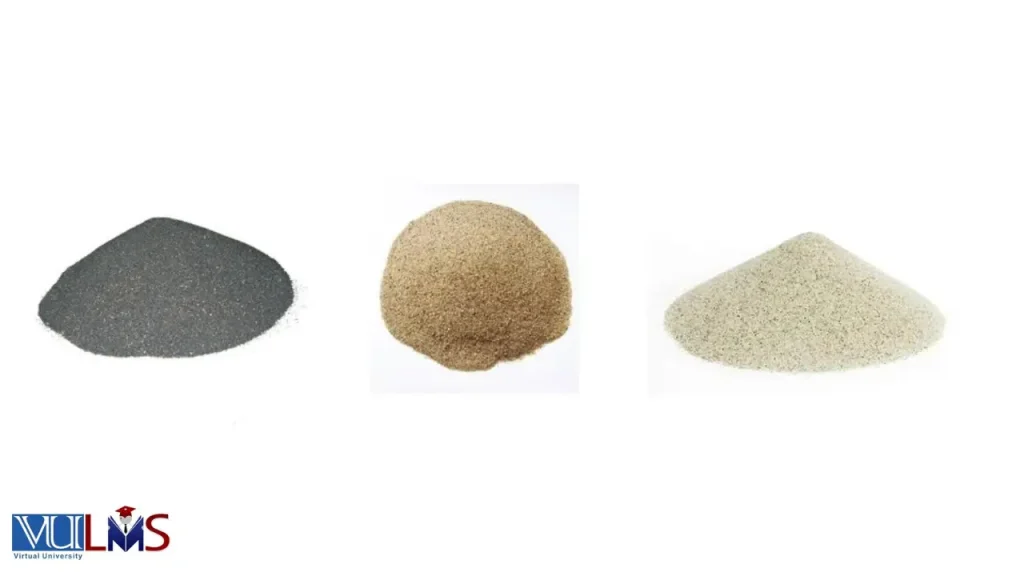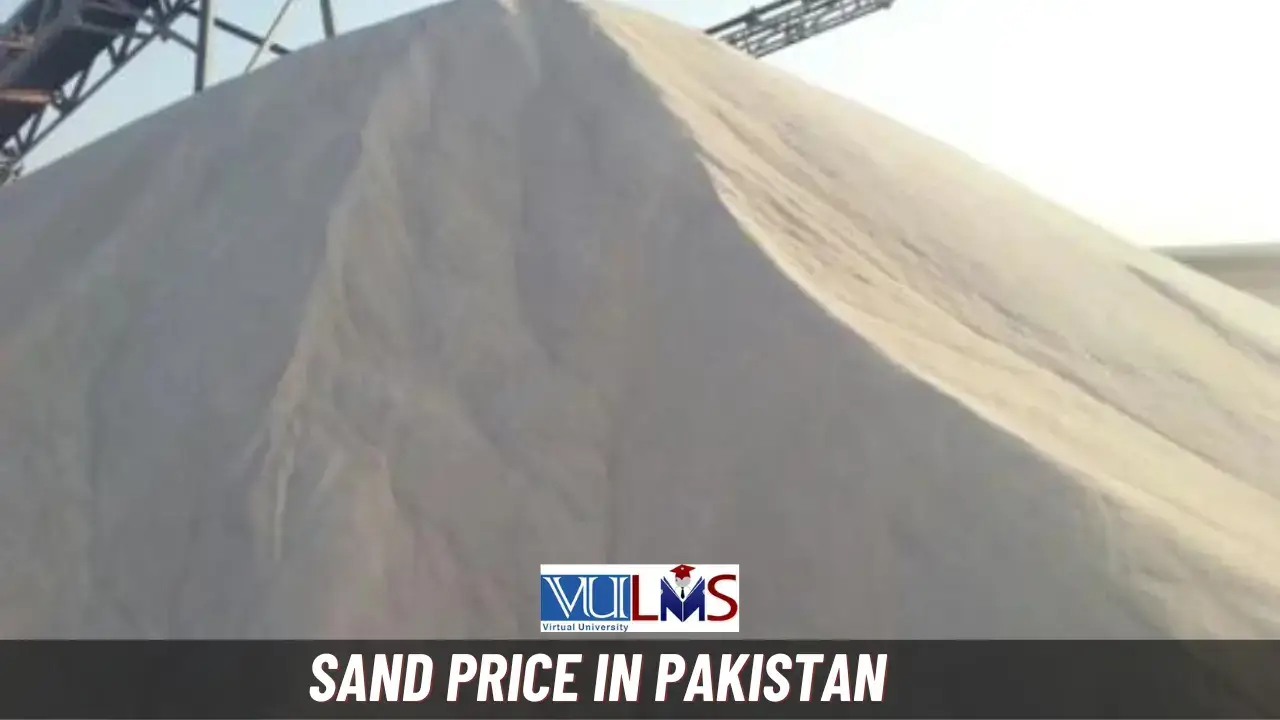Sand Price in Pakistan Today 2024 | Latest (Rait) Rate
When it comes to building a powerful structure, sand stands out as a silent yet essential player in the construction game. From the foundation to the finishing touches, and is intricately made up into the curtain of new buildings. But have you ever thought about the Sand Price in Pakistan in 2024? Let’s till deeper into the sands of time and expose the latest rates and other crucial aspects. In the hustle and bustle of construction activities, knowing the current sand prices is paramount.

Sand Price in Pakistan (Updated Rate)
The Sand Price in Pakistan for 2024, commonly known as the Rait, ranges from Rs. 44 per cubic foot to Rs. 44,000 per 1000 cubic feet (damper). This variation is influenced by factors such as weight and quality, reflecting the dynamic nature of the sand market in Pakistan.
| Material | Unit (Cubic Feet) | Price |
|---|---|---|
| Sand | 1000 (Damper) | RS. 44,000 |
| Sand | 200 (Trali) | RS. 10,000 |
| Sand | 1 Cubic Feet | RS. 44 |
Also Read
TR Garder Price in Pakistan Today | T Iron & Garder Rates
Cement Price In Pakistan Today Rate List
Factors Affecting the Price of Sand in Pakistan
Availability and Extraction Costs
The geographical distribution of sand deposits plays a pivotal role in determining the ease of access. Areas with readily available deposits often witness lower extraction costs, contributing to a more stable sand market.
Costs Associated with Extraction Methods
The methods employed to extract sand vary, each with its associated costs. Dredging from rivers, open-pit mining, or excavation in deserts all incur distinct expenses. Technological advancements in extraction methods can impact overall costs and, consequently, the pricing of sand.
Demand and Supply Dynamics
The construction industry experiences periods of heightened activity, typically during certain seasons. Increased demand for sand during these peak construction periods can exert upward pressure on prices due to the surge in orders.
Government Regulation
Sand prices are significantly influenced by government oversight. Sand availability and pricing in the market may be directly impacted by the laws controlling its extraction, transportation, and sale.
Environmental Elements
Sand extraction activities may be disrupted by unfavorable weather conditions, such as strong storms or persistent rain. Until regular extraction activities can restart, pricing and availability may be affected by temporary shortages resulting from these delays.
Seasonal Variations
Construction activities often follow seasonal patterns, with increased demand during favorable weather conditions. Sand prices may fluctuate based on these seasonal variations, reflecting the cyclical nature of construction projects.
Common Uses of Sand in Pakistan
Construction Purposes
The sand serves as a fundamental ingredient in the production of concrete and mortar. Its fine particles contribute to the structural integrity and workability of these essential building materials.
House Building
In house construction, sand finds its place in crucial aspects like laying foundations and plastering walls. Its cohesive properties provide stability to structures, ensuring a solid base for the building.
Infrastructure Projects
Sand is essential for building roads, bridges, and other civil engineering projects. The resilience and lifespan of these vital infrastructures depend heavily on their application in the construction of lasting structures.
Landscaping
Sand is useful for improving outdoor areas even outside of construction sites. Sand’s decorative and functional applications range from edging paths in gardens to sculpting park landscapes, all of which enhance the overall layout of outdoor spaces.
Industrial Applications
Industries beyond construction harness the versatility of sand in their manufacturing processes. It finds applications in sectors such as glass manufacturing, metal casting, and the production of various industrial goods.
Types of Sand in Pakistan:
- River Sand: River sand, a fundamental type in Pakistan’s construction industry, is typically sourced from rivers. Its widespread usage influences the overall sand price in Pakistan, with availability playing a crucial role.
- Desert Sand: Desert sand, prevalent in arid regions, poses challenges for construction due to its fine and rounded particles. Its unsuitability for certain applications necessitates choices in construction projects.
- Sea Sand: Sea sand, extracted from coastal areas, features varied particle sizes. While suitable for specific purposes like concrete production, its salt content can limit its use in certain applications.
- Crushed Sand: Crushed Sand, derived from crushing larger rocks, serves as a substitute for river sand in concrete production. Its angular particles contribute to the strength and stability of concrete mixes.
- Silica Sand: Silica Sand is used in many different manufacturing processes because silica sand has a high concentration of silica, including the production of glass. Its uniform particles and specific characteristics make it indispensable in these specialized sectors.
Advantages and Disadvantages of Sand in Pakistan
Advantage
- Sand deposits are abundant in Pakistan, guaranteeing a consistent and easily available supply for construction demands.
- Sand is widely available, which helps the economy and builders by promoting economical building techniques.
- Pakistani sand is adaptable and compatible, making it suitable for a wide range of building uses.
- The sand business is essential to the country’s economy since it creates jobs and promotes economic expansion.
- Sand has long been used in traditional building techniques to preserve historical and cultural building ways.
Disadvantage
- Local ecosystems and habitats may be impacted by environmental deterioration brought on by unchecked extraction and lax laws.
- Because sand resources are limited, sustainable extraction methods are required to prevent overexploitation and depletion.
- Sand activities can produce air pollution through dust emissions, which puts respiratory health at risk and necessitates tight environmental compliance.
- Sand extraction and other land uses, including agriculture, may compete for space, which could result in disputes and zoning issues.
Also Read
Pakistan Cables Price List | 7/29, 3/29 & Other Wire Rate
PAK Fan Price in Pakistan All Modles Rate Today
Overall Conclusion
In summary, the Sand Price in Pakistan for 2024 holds significant importance in the construction industry. An in-depth analysis of factors influencing prices, coupled with an understanding of common uses, advantages, disadvantages, and various types of sand, provides a comprehensive view of its crucial role in construction. The variation considerations length of economic feasibility, environmental impact, and the complex balance required for sustainable development.
Frequently Asked Questions (FAQs)
We can easily get sand from different locations like rivers, seas, canals, and deserts.
Fluctuations are driven by factors like availability, seasonal demand, government regulations, and environmental considerations.
Sand finds extensive use in construction, including concrete, house building, infrastructure, landscaping, and various industries.
Benefits include versatility and cost-effectiveness, while negatives involve environmental impact and potential land use conflicts.
Yes, types include river sand, desert sand, sea sand, crushed sand, and silica sand, each with specific applications in construction.







